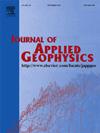Variance-based global sensitivity analysis of forward soil layer model parameters in earthquake horizontal-to-vertical spectral ratio
IF 2.2
3区 地球科学
Q2 GEOSCIENCES, MULTIDISCIPLINARY
引用次数: 0
Abstract
The inversion of subsurface soil layer velocity structures using the earthquake horizontal-to-vertical spectral ratio (EHV) is a significant research focus in seismology and earthquake engineering. Accurately identifying the sensitivity of physical and mechanical parameters of various underground soil layers is crucial for developing effective inversion strategies. However, most existing EHV sensitivity studies focus on local sensitivity analysis and fail to comprehensively reveal the global sensitivity of model parameters across different soil layers. In this study, we conducted statistical analyses using 648 borehole datasets from the KiK-net network and 1073 borehole datasets from the Beijing region. Based on these analyses, the corresponding statistical models were developed. Subsequently, we systematically investigated the sensitivity of different parameters to EHV using variance-based global sensitivity analysis. The results indicate that parameter sensitivity varies with frequency. In the low-frequency range, the variance of EHV output is primarily influenced by shear wave velocity (Vs) and soil thickness (h). In contrast, compression wave velocity (Vp) and h are the dominant factors in the high-frequency range. The quality factors of shear waves (Qs), compression waves (Qp), and density (ρ) exert negligible effects across all frequency ranges. This study aims to establish effective constraints for EHV inversion, facilitate the optimization of parameter combinations, assess the feasibility of the inversion scheme and the reliability of the results, and offer valuable insights to enhance the efficiency of the inversion process.
求助全文
约1分钟内获得全文
求助全文
来源期刊

Journal of Applied Geophysics
地学-地球科学综合
CiteScore
3.60
自引率
10.00%
发文量
274
审稿时长
4 months
期刊介绍:
The Journal of Applied Geophysics with its key objective of responding to pertinent and timely needs, places particular emphasis on methodological developments and innovative applications of geophysical techniques for addressing environmental, engineering, and hydrological problems. Related topical research in exploration geophysics and in soil and rock physics is also covered by the Journal of Applied Geophysics.
 求助内容:
求助内容: 应助结果提醒方式:
应助结果提醒方式:


